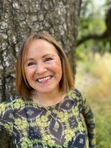Mary Reynolds Thompson's Blog, page 6
June 8, 2016
School Prayer by Diane Ackerman
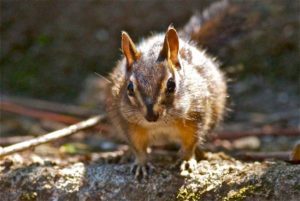
School Prayer
In the name of the daybreak
and the eyelids of morning
and the wayfaring moon
and the night when it departs,
I swear I will not dishonor
my soul with hatred,
but offer myself humbly
as a guardian of nature,
as a healer of misery,
as a messenger of wonder,
as an architect of peace.
In the name of the sun and its mirrors
and the day that embraces it
and the cloud veils drawn over it
and the uttermost night
and the male and the female
and the plants bursting with seed
and the crowning seasons
of the firefly and the apple,
I will honor all life
– wherever and in whatever form
it may dwell – on Earth my home,
and in the mansions of the stars.
(c) Diane Ackerman
What might happen, do you think, if children everywhere began the day with a prayer like this one? Write you vision in your journal.
Write your own prayer, modeling it on Ackerman’s poem. Thus, In the name of….I swear I… In the name of… I will honor…. Share you poem below.
How would you live if you honored all life, in whatever form?
The post School Prayer by Diane Ackerman appeared first on Mary Reynolds Thompson.
Heat
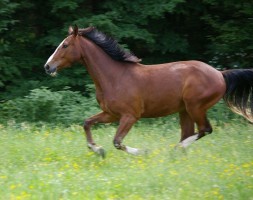
My mare, when she was in heat,
would travel the fenceline for hours,
wearing the impatience in her feet into the ground.
Not a stallion for miles, I’d assure her,
give it up.
She’d widen her nostrils,
sieve the wind for news, be moving again,
her underbelly darkening with sweat,
then stop at the gate a moment, wait
to see what I might do.
Oh, I knew
how it was for her, easily
recognized myself in that wide lust:
came to stand in the pasture
just to see it played.
Offered a hand, a bucket of grain—
a minute’s distraction from passion
the most I gave.
Then she’d return to what burned her:
the fence, the fence,
so hoping I might see, might let her free.
I’d envy her then,
to be so restlessly sure
of heat, and need, and what it takes
to feed the wanting that we are—
only a gap to open
the width of a mare,
the rest would take care of itself.
Surely, surely I knew that,
who had the power of bucket
and bridle—
she would beseech me, sidle up,
be gone, as life is short.
But desire, desire is long.
(c) Jane Hirshfield
How does desire express itself through your body? Write a poem about your own heat and longing and desire.
What holds you back from what you long for? Where is the gap in the fence for you? How will you break free? Write the story of your escape in poetry or prose.
The post Heat appeared first on Mary Reynolds Thompson.
June 7, 2016
A Wild Soul Woman: Clare Dakin and Mary Reynolds Thompson in Conversation
A Wild Soul Woman: Clare Dakin and Mary Reynolds Thompson in Conversation
Clare Dakin of TreeSisters and author Mary Reynolds Thompson, the creator of A Wild Soul Woman course, share their feelings about why it’s so important to re-wild our souls as women. To register: http://www.treesisters.org/wild-soul-...
The post A Wild Soul Woman: Clare Dakin and Mary Reynolds Thompson in Conversation appeared first on Mary Reynolds Thompson.
May 18, 2016
Memory
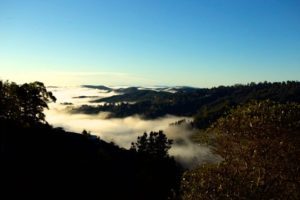
Memory
Climbing through a dark shower
I came to the edge of the mountain
I was a child
and everything was there
the flight of eagles the passage of warriors
watching the valley far below
the wind on the cliff the cold rain blowing upward
from the rock face
everything around me had burned
and I was coming back
walking on charcoal among the low green bushes
wet to the skin and wide awake
(c) W.S. Merwin
What’s your most vivid childhood memory of nature? Write a poem or prose piece, beginning with the words: “I was a child…”
When in nature have you felt wide awake?
In what landscapes do you feel most alive?
The post Memory appeared first on Mary Reynolds Thompson.
May 17, 2016
ARE YOU A WILD SOUL WOMAN?
The post ARE YOU A WILD SOUL WOMAN? appeared first on Mary Reynolds Thompson.
April 13, 2016
Proclamation
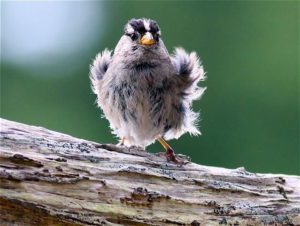 Whereas the world is a house on fire;
Whereas the world is a house on fire;
Whereas the nations are filled with shouting;
Whereas hope seems small, sometimes
a single bird on a wire
left by migration behind.
Whereas kindness is seldom in the news
and peace an abstraction
while war is real;
Whereas words are all I have;
Whereas my life is short;
Whereas I am afraid;
Whereas I am free – despite all
fire and anger and fear;
Be it therefore resolved a song
shall be my calling – a song
not yet made shall be vocation
and peaceful words the work
of my remaining days.
(c) Kim Stafford
Begin a poem with the word Whereas. Repeat the word Whereas at least eight times. See where it leads you.
As you look around at the state of the world, how do you feel called to respond? What will be the work of your remaining days?
Write a poem or prose piece that explores the meaning of “peaceful words.” What have you discovered?
The post Proclamation appeared first on Mary Reynolds Thompson.
There Is a Field. I’ll Meet You There
It’s my last panel, on the last day 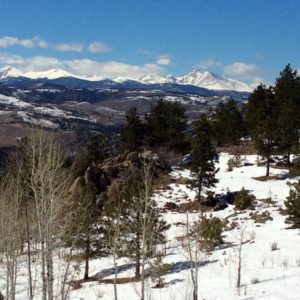 of the Conference on World Affairs in Boulder, Colorado. The first two women panelists have shared stories of their transgender children. Athena Edmonds, a poet and advocate for LGBTQ youth, read aloud the heart wrenching poems she wrote while her trans child, little more than a toddler, fought fiercely and unequivocally for the right to be a boy. Athena tells us, he asked me if his hair was pretty, his eyelashes? Then get rid of them, he said.
of the Conference on World Affairs in Boulder, Colorado. The first two women panelists have shared stories of their transgender children. Athena Edmonds, a poet and advocate for LGBTQ youth, read aloud the heart wrenching poems she wrote while her trans child, little more than a toddler, fought fiercely and unequivocally for the right to be a boy. Athena tells us, he asked me if his hair was pretty, his eyelashes? Then get rid of them, he said.
After we panelists have said our pieces, a woman comes to the microphone to ask her question. She has red hair. She speaks into the microphone and tells us that only on a panel like this one––Art and Healing: Words that Hurt, Words that Heal––does she dare to speak. She has a child, she says, who is homosexual. The word seems to stick in her throat. She wants help to change her child’s orientation, to make him normal. “People can change, can’t they?” Her eyes plead for an answer. For absolution.
Athena looks at the red haired woman. I can almost feel the sigh emanating from her body. The sadness. I knew a nine year old boy, she tells the woman, who tried to commit suicide because he was trapped in a girl’s body. “Nine years old and he wanted to die.”
The woman at the microphone looks around at the others in the audience. She tells us that she knows what she is saying is unpopular. And she is right. Boulder is a progressive community. She returns to her seat on legs as wobbly as a young fawn’s, and remains sitting upright, eyes riveted on the stage.
A silence ensues. It has such a quality and presence it appears to shimmer like the light from the windows of the Old Chapel where the session is being held.
This is what Rumi’s poem is talking about, I say, breaking the silence. Earlier I’d read aloud his much-quoted poem:
Out beyond ideas of wrongdoing and rightdoing,
there is a field. I’ll meet you there.
When the soul lies down in that grass,
the world is too full to talk about.
Ideas, language, even the phrase “each other” doesn’t make any sense.
I had spoken of the need to take off our armor of certitude and enter the field open, vulnerable. We might only be able sit at the edge the field, staring across at those we violently oppose and disagree with, but the field is the starting place, if not yet common ground. It is a place to begin the difficult and essential conversations.
What would it take to move one step closer to each other? What would each of us have to let go of? How willing can we become to engage, even when the divide between us feels impervious and permanent?
The Conference on World Affairs seems made for these moments.
On a panel I was on about immigration, a professor of international and environmental economics, born in Tehran, talked of his horror at the popularity of Donald Trump and the rise of racism in America. In words strangely reminiscent of Shakespeare’s Merchant of Venice, he asked, “Don’t I, too, bleed?”
Over the course of the week, I spoke on March to the Beat of Your Own Drum, What Story Are You Living?, Can Books Still Change the World? , We Are All Capable of Being Addicts, Happy Places, Creative Spaces, Creativity: Breaking the Blocks & Keeping the Flow, Art and Healing: Words that Hurt, Words that Heal, Door Open/Door Closed: The Immigrant Experience in America with academics, musicians, bestselling authors, psychotherapists, policy wonks, technocrats, artists, and many more.
We mix. We mingle. Different as we are, beneath the surface of our stories and our circumstances, we feel each others’ concern for the world––we are all bleeding. The world is in trouble, and so are we. We need more than ever to create spaces that allow us to have hard conversations about challenging and complex topics.
There is a field. I’ll meet you there.
The post There Is a Field. I’ll Meet You There appeared first on Mary Reynolds Thompson.
April 2, 2016
Spring
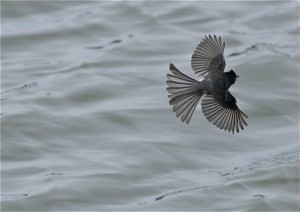
Before I was born I was water.
I thought of this sitting on a blue
chair surrounded by pink, red, white
hollyhocks in the yard in front
of my green studio. There are conclusions
to be drawn but I can’t do it anymore.
Born man, child man, singing man,
dancing man, loving man, old man,
dying man. This is a round river
and we are her fish who become water.
–Jim Harrison, from Saving Daylight
This poem speaks to the cycle of birth and death. Write your own poem exploring these themes.
Focus on an image in nature. A tree, bird, pond. Allow the image itself to teach you about the human condition. Journal your responses.
Write a poem or prose piece about water and your relationship to it.
The post Spring appeared first on Mary Reynolds Thompson.
Eila Kundrie Carrico’s Wild Soul Story
Eila Kundrie Carrico is an 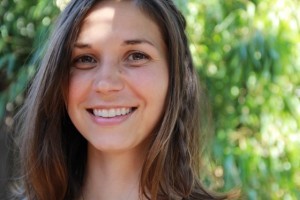 initiated Celtic priestess, teacher, and author THE OTHER SIDE OF THE RIVER: STORIES OF WOMEN, WATER AND THE WORLD. As you might imagine, her story is a water story. And it is one full of adventure and awareness hard won, when a friend falls into a raging river and is swept out of sight.
initiated Celtic priestess, teacher, and author THE OTHER SIDE OF THE RIVER: STORIES OF WOMEN, WATER AND THE WORLD. As you might imagine, her story is a water story. And it is one full of adventure and awareness hard won, when a friend falls into a raging river and is swept out of sight.
Eila grew up in rural central Florida where she saw divinity in the purple clouds that hung low over the central Florida sky and felt profound presence in the sunlight shining through leaves. She sang, danced and rode horses; spent long hours under the shady row of sunflowers in her garden, and nursed countless puppies, sheep, calves and birds back to health with all-night songs. Eila taught and lived in Paris, Ghana, Thailand and India before settling into her studies of Anthropology, Religion and Chinese Medicine in the San Francisco Bay Area.
Today, Eila lives in the hills of North Berkeley next to a magical portal of a Maple Tree on a bed of ancient, knobby rocks surrounded by ivy and jasmine with her young son and partner. You can find more about Eila and her work at EilaCarrico.com
Please note: The quotation cited as Viviane Dyzak is actually from Holly Hamilton,DD, Founder of Awakening Avalon School of Earth-Based Wisdom.
The post Eila Kundrie Carrico’s Wild Soul Story appeared first on Mary Reynolds Thompson.
Lessons from a Gopher Snake
I am writing this from Boulder, 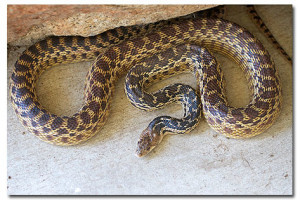 Colorado. I am staying with friends over the weekend, and then on Monday morning I present at my first panel at the Conference on World Affairs. This will be the first of eight panels, covering a range of topics from creativity, to addiction, to immigration.
Colorado. I am staying with friends over the weekend, and then on Monday morning I present at my first panel at the Conference on World Affairs. This will be the first of eight panels, covering a range of topics from creativity, to addiction, to immigration.
The Conference on World Affairs attracts almost 80,000 people each year. The idea is to mix and match individuals of differing experience, education, and perspectives and throw them into discussions on a variety of topics, some of which they have no expertise in. The dialog that ensues is thus freed from cant and certitude, and begins to live and breathe more authentically.
I am really excited to be a part of it. And also nervous. Which is why I’m so grateful for the lesson I received on Easter Sunday from a gopher snake.
Gopher snakes are non-venomous. But when they want to look threatening, they can. They puff up their body and curl themselves into the classic strike pose of a pit viper. However, rather than delivering an open-mouthed strike, the gopher snake strikes with a closed mouth, using its blunt nose to “warn-off” possible predators.
A gopher snake will also shake its tail, confusing predators into thinking it is a rattlesnake. In dry grass this makes them sound eerily like a rattler. When Bruce and I came across a four foot gopher that Easter morning, the sound it made on the gravel stopped us in our tracks.
So what has this got to do with my being a panelist at the Conference of World Affairs? Only this: sometimes you have to act as if you’re a little bit braver and fiercer than you feel in the moment.
After all, it’s worked for the gopher snake for tens of thousands of years.
The post Lessons from a Gopher Snake appeared first on Mary Reynolds Thompson.

